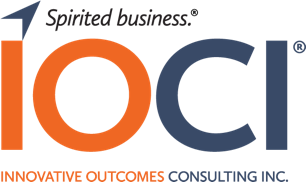Get clear on what you want to accomplish
It’s the time of year when we take a moment to reflect on where we are, what we’ve achieved and what marks we’d like to hit in 2019. But it’s not enough to just jot down a few ideas. To give us the best chance of success, it’s important that we get clear on what we want to accomplish, why we want those outcomes and how we’ll make it so. Those steps are the foundation of a well-crafted, intentional plan.
 But having a good plan is only half of the work. Focused, disciplined action is what steadily advances us toward our goals.
But having a good plan is only half of the work. Focused, disciplined action is what steadily advances us toward our goals.
So, if it’s that clear-cut, why are most of us failing to achieve our goals?
Derek Sivers, founder of CD Baby, says, “If you cannot learn to focus, you will live an unrewarding and unsuccessful life.” While we may know this intuitively, this simple concept is not easy to live up to in our modern society. Think about it. Our attention is competing against both random and well-designed distractions. The success of today’s online apps is largely based on the study of how to distract us from the priorities of our daily lives.
How often have you found yourself “just taking a quick peek” at Facebook when suddenly you’re immersed in hundreds of posts that do nothing to advance your priorities.
Whether you’re setting goals for a business or are an individual striving to up your game, it’s important to adopt an execution- and progress-monitoring system for making your 2019 goals a reality.
Here’s how:
Take Stock
Design a retreat for you and your business partners or, if this is a personal endeavor, with your significant other. Take stock of and celebrate all you accomplished in the prior year and determine what deserves your focused attention now.
Craft a few key questions to respond to, for example:
- What do my clients (or family) need?
- What problems can I solve, and what opportunities should I pursue? Why?
- If I do this work, how would I describe the impact and who would benefit?
- What resources and support do I need to move forward and do my best work?
Trouble Shoot
Create awareness of when and why you may have fallen short of achieving goals in the past. IOCI’s white paper and blog post on The Habit Mindset can help you learn about assessing your capacity to change and your ability to form new habits and create more disciplined action in your life that lead to setting and achieving your goals. The Habit Mindset includes our RIM™ model for analyzing when and why you may be having trouble implementing a new habit. By digging into what might be getting in the way of doing your best work, you’ll have a better chance of improving your odds of success for delivering future results.
Choosing and Committing To What Counts
Using the information from your taking stock retreat and trouble-shooting derailers, you’re now ready to set clear objectives and define key results (OKRs).
“Much of what we frequently hear about habits are in fact longstanding myths,” explains Marialane Schultz, CEO of Innovative Outcomes Consulting Inc. (IOCI). “And yet people believe these myths and act on them, which leads them to continue to struggle with establishing and maintaining beneficial habits. We see it all the time with our clients.”
Here’s an example:
Be an Accomplished Single-Tasker
Many in our society believe their ability to multitask is an indicator of intelligence and efficiency. The truth is, multitasking is not only bad for your health, it’s a drain on the brain’s cognitive resources. At the extreme, multitasking can flood our system with the stress hormone cortisol, which is known to cause damage to the memory region of the brain, says Sandra Bond Chapman, Ph.D., who studies brain function and has written about why single-tasking actually makes people smarter.
The experts recommend adopting a routine of sequentially processing your tasks to take advantage of the brain’s natural wiring for deep and innovative thinking. In other words, by single-tasking, you can expect to have more energy, focus and creativity. This means you’ll have to muster the willpower to close Twitter, Facebook, email and text, and silence the phone or whatever else is dividing your attention.
Think of single-tasking like interval fitness training that looks like this: focus deeply for 20 minutes on a single task, then take a break for 10 minutes to stretch and drink water. Repeat the process until your priorities and key results list for the day gets shorter and shorter. This approach, similar to the Pomodoro technique, is a great tool to kick-start your goals, improve your focus and position your brain for peak performance.
Crush Your Goals
Now you have a process to develop a clear plan with well-defined goals, a system to remain aware of when you might drift off track and tools to keep you focused and moving forward. It’s time to take action and crush it!
Like what you read?
See more articles like this on Insights, our informative blog. And count on IOCI for white papers and other tools to help you advance your professional and personal goals.


